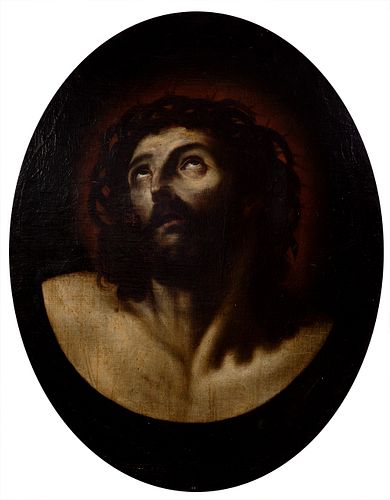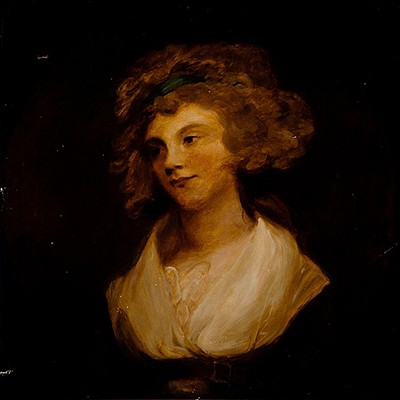MANUEL DE SAMANIEGO Y JARAMILLO (Quito, 1767 - 1824). "Ecce Homo", Quito, 1817. Oil on canvas.
About Seller
Carrer Aragó 346
Barcelona
Spain
Setdart Subastas was born in 2004 and is currently the first online art auction in Spain with solidity, prestige and reliability guaranteed by our more than 60,000 users. Setdart has a young, dynamic and enterprising team ready to successfully manage the purchase and sale of art works through custom...Read more
Two ways to bid:
- Leave a max absentee bid and the platform will bid on your behalf up to your maximum bid during the live auction.
- Bid live during the auction and your bids will be submitted real-time to the auctioneer.
Bid Increments
| Price | Bid Increment |
|---|---|
| EUR€0 | EUR€10 |
| EUR€200 | EUR€25 |
| EUR€500 | EUR€50 |
| EUR€1,000 | EUR€100 |
| EUR€3,000 | EUR€200 |
| EUR€5,000 | EUR€500 |
| EUR€10,000 | EUR€1,000 |
| EUR€20,000 | EUR€2,000 |
| EUR€50,000 | EUR€5,000 |
About Auction
Nov 25, 2021
Setdart Auction House sofia@setdart.com
- Lot Description
MANUEL DE SAMANIEGO Y JARAMILLO (Quito, 1767 - 1824). "Ecce Homo", Quito, 1817. Oil on canvas. Signed and dated on the back. Measurements: 65 x 51 cm. Piece restored in Valencia in 1965. In this devotional canvas, the theme of Ecce Homo is represented, very common in this type of paintings. Of simple and clear composition, with the face of Christ in the foreground, the absence of narrative details deepens in the expressive power and the pathos, thought to move the spirit of the faithful who prays before the image, within a tremendist sense very typical of the baroque in the catholic countries. The theme of Ecce Homo belongs to the cycle of the Passion, and precedes the episode of the Crucifixion. Following this iconography, Jesus is presented at the moment when the soldiers mock him, after crowning him with thorns, dressing him in a purple tunic (here red, symbolic color of the Passion) and placing a reed in his hand, kneeling and exclaiming "Hail, King of the Jews!". The words "Ecce Homo" are those pronounced by Pilate when presenting Christ before the crowd; their translation is "behold the man", a phrase by which he mocks Jesus and implies that the power of Christ was not such in front of that of the leaders who were judging him there. Manuel de Samaniego y Jaramillo was an Ecuadorian painter and sculptor, considered one of the last representatives of the Quito school of art. His work was divided between the historical periods of the end of the Spanish domination in the Royal Audience of Quito, and the beginning of the independent republican life as part of Gran Colombia. Between 1801 and 1802, together with his disciple, Bernardo Rodríguez, he signed an important contract with the Metropolitan Cathedral of Quito to decorate the spandrels of the arches of the main nave with scenes from the life of Jesus, and the trascoro of the main altar with a large canvas of the "Assumption of the Virgin". He also painted a series of oil paintings in the lateral naves. At the beginning of 1819 the president of the Royal Court, Juan Ramírez Orozco, commissioned him to paint a posthumous portrait of Queen consort Isabel de Braganza, first wife of Ferdinand VII, which was used to preside over her funeral in the Metropolitan Cathedral of the city, held in July of the same year. Influenced by the work of the Dutchman Karl van Mandez, Samaniego wrote "Tratado de Pintura", an academic document and the only one of its kind to be found in South America, through which he attempted to systematize and organize more scientifically the exuberant and liberal baroque-rococo production that had had its period of splendor among the artists of the Quito school at the beginning of the 18th century. His works are found in several churches and convents in the city of Quito, but especially in the Cathedral and La Merced. His work was, for the most part and according to the pictorial custom of the time, a reflection of miscegenation and religious concerns.
Dimensions:
INV Number:
65 x 51 cm.
35215178 - Shipping Info
-
In-house shipping available. Please inquire at admin@setdart.com.
-
- Buyer's Premium



 EUR
EUR CAD
CAD AUD
AUD GBP
GBP MXN
MXN HKD
HKD CNY
CNY MYR
MYR SEK
SEK SGD
SGD CHF
CHF THB
THB

















